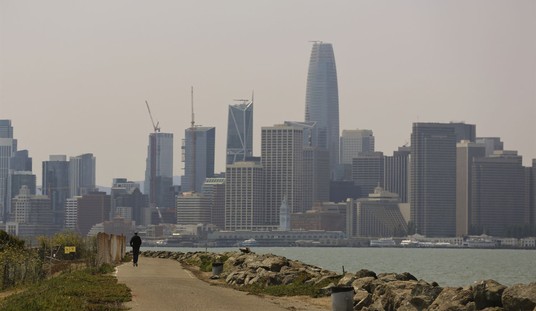In his televised address to the nation almost two weeks ago, Barack Obama said “the buck stops with me” and took responsibility for the failure to prevent the EunuchBomber. The report from Obama’s national-security team acknowledged a failure to connect the dots, blaming it on bureaucratic snarls and a lack of attention to mission guidelines. However, the New York Times reports today that the Obama administration missed more red flags than it has acknowledged — and didn’t pay enough attention to the growing threat from Yemen:
Mr. Obama this month presented his government’s findings on how the plot went undetected. But a detailed review of the episode by The New York Times, including more than two dozen interviews with White House and American intelligence officials and with counterterrorism officials in Europe and Yemen, shows that there were far more warning signs than the administration has acknowledged.
The officials also cited lapses and misjudgments that were not disclosed in the declassified government report released Jan. 7 about what went wrong inside the nation’s counterterrorism network.
In September, for example, a United Nations expert on Al Qaeda warned policy makers in Washington that the type of explosive device used by a Yemeni militant in an assassination attempt in Saudi Arabia could be carried aboard an airliner.
In early November, American intelligence authorities say they learned from a communications intercept of Qaeda followers in Yemen that a man named “Umar Farouk” — the first two names of the jetliner suspect, Umar Farouk Abdulmutallab — had volunteered for a coming operation.
In late December, more intercepts of Qaeda operatives in Yemen, who had previously focused their attacks in the region, mentioned the date of Dec. 25, and suggested that they were “looking for ways to get somebody out” or “for ways to move people to the West,” one senior administration official said.
And the same day those White House meetings on terrorist activities took place, a Qaeda figure made ominous — and seemingly prescient — threats against the United States.
“We carry prayer beads, and with them we carry a bomb for the enemies of God,” a man describing himself as a Qaeda fighter from Yemen announced in a video released on Al Jazeera satellite television. “The issue is between us and America and its allies, and beware, those who stand in the ranks of America.”
Why didn’t the Christmas Day reference tighten security on flights to the US? Counterterrorism officials just assumed that the Yemeni branch of AQ didn’t have the sophistication to get a terrorist onto a flight. And worse, no one took command of any one particular threat thread. The massive bureaucracy imposed by Congress in 2005 as the DNI/NCTC basically allowed everyone to assume that someone else would take charge of threat “dots,” and no one ever did.
The assumption of a lack of sophistication seems utterly inexplicable. Just a few months earlier, a terrorist used the exact same device to detonate his underwear in an attempt to assassinate the Saudi head of counterterrorism operations. He failed to kill his target, but the terrorist succeeded in getting the bomb past multiple layers of tight security. That should have ended any assumptions about a lack of sophistication on the part of Yemeni AQ.
Now, the intelligence community is angry over the White House attempts to put the blame on its operations, claiming that political considerations impede their ability to do tasks like update the no-fly list and the TIDES database. The Times report still makes a rather compelling case that the main problem with identifying and blocking Umar Farouk Abdulmutallab was not political, though, but bureaucratic. The structure of the DNI/NCTC has added to the problems identified by the 9/11 Commission rather than solving them — to the point where Rep. Brad Miller (D-NC), the chair of the House committee that oversees the no-fly/TIDES effort, says that “The program not only can’t connect the dots, it can’t find the dots.”
Barack Obama can legitimately say that he inherited these problems, although in part from himself, since he was part of that Congress that created the mess in 2005. The question is whether he will end the mess and create a more flexible and responsive structure for intelligence that finds and connects the dots before Dutch filmmakers have to throw themselves onto terrorists bound for America.








Join the conversation as a VIP Member